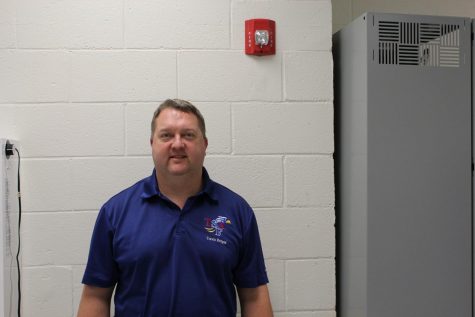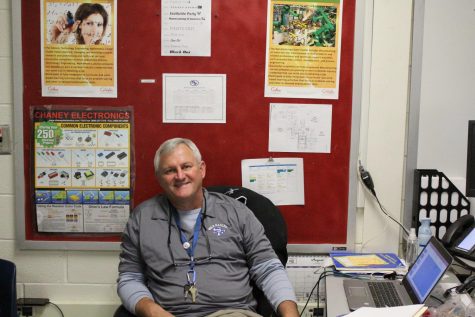Email: [email protected]
Twitter : @seely_douglas
Common tools. The table saw is patiently awaiting to be used by many eager students ready to work on their projects.
December 5, 2018
South offers many pathways, including ones for students who prefer to be more hands-on with their projects, like manufacturing and engineering. While engineering and manufacturing have many similarities, they each help prepare students for separate roles in society. Manufacturing refers to the making of an item on a large industrial scale, while engineering is the field of design, building, and, thanks to the use of engines, machines, and structures.
South Forsyth has both an engineering pathway and a manufacturing pathway. The manufacturing pathway consists of 3 classes: Foundations of Manufacturing, Robotics and Automated Systems, and Production Enterprises. Each class builds off the previous course and puts more responsibility on students. Engineering is more of a hands-on working style for students who like to build, while manufacturing teaches students how to program machines to do the work. One can often look into the manufacturing classroom and see students working on a new program for their robots, or engineering students building their next project. Both pathways offer information and training that applies to many different careers.
These pathways help prepare students for the increased need for jobs in the STEM (science, technology, engineering, and mathematics) fields.
“I do feel like this will help me get a job later in life when I get out of school,” junior Jake Stover stated
As companies and businesses become more automated, fewer workers are needed; but workers still have to program and keep the machinery in working condition. Students who study in the STEM field will have a form of job security. The high demand for people with these skills ultimately leads to higher wages.
“Hopefully they will get certified in solid works and find a passion, even if it’s [Manufacturing] not their passion,” South’s manufacturing teacher, Mr. Hodges, said.

Students who take the manufacturing pathway will learn about design maintenance and how to produce products on a large scale. These skills prepare students for jobs like plant manager, material procurer, safety director, etc. Many of these jobs are capable of producing wages of up to $100,000 annually. The foundation class is a great place to find out what one is interested in before getting a degree in the field.
“I wanted to be in urban planning,” junior Reese Hammond mentioned.
The final course in the manufacturing pathway, Production Enterprises, is working on a project designed and managed by the students. The students plan to build and produce 40 dolls to give as Christmas presents to children who suffer from cancer. This project helps the students get a feel for what’s it like to be in the workforce, making their own decisions on topics like deadlines and where the project is headed.
The engineering pathway is geared towards the design and building part of production. The engineering pathway is built on three classes , Foundations of Engineering, Concepts of Engineering, and Applications of Engineering. Students in the engineering class will be given an end goal or objective, and they will have to design and build something to achieve that goal.
In engineering, design skills are improved among many things, from a part, to an assembly line, to complete buildings. Engineering gives students general knowledge in many fields, but they still need to have some sort of secondary training to be fully prepared for the job they want. After taking this course, students will be more prepared for occupations such as equipment operators, programmable logic controllers, and Solidworks designers. Knowing how to do these tasks will make students a very valuable resource to employers.
The Applications of Engineering class is working on a fluid power project. To finish off the pathway, students in the class are building a system to manage toxic waste. This power fluid project shows the students how to apply the skills they learned in the previous classes for real-world problems.
“Find something you’re interested in and pursue a career in that field,” says Mr. Chamberlain.

If students are unsure of what they want to do after high school, they should try out the pathways’ foundation classes to get a feel for what they may become interested in. Even if the students find out that the field isn’t something they wish to pursue, these pathways are a great way to help high school students discover their passions early on.